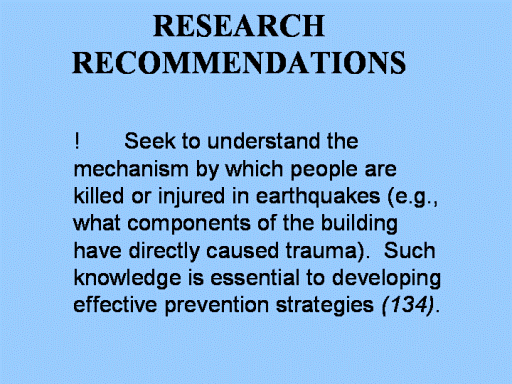| front |1 |2 |3 |4 |5 |6 |7 |8 |9 |10 |11 |12 |13 |14 |15 |16 |17 |18 |19 |20 |21 |22 |23 |24 |25 |26 |27 |28 |29 |30 |31 |32 |33 |34 |35 |36 |37 |38 |39 |40 |41 |42 |43 |44 |45 |46 |47 |48 |49 |50 |51 |52 |53 |54 |55 |56 |57 |58 |review |
 |
!
Attempt to identify factors related to the survival of those
rescued
following a building collapse.
For example, study the relationship between the incidence of
injuries and a building's structural design, the construction
materials used, nonstructural components in the building,
demographic factors of the community, and the physical circumstances
of entrapment. Determining
where people are located when they are injured or killed can provide
valuable information to assist both in locating potential survivors
and in making recommendations to building occupants as to what to do
during an earthquake.
! Establish the cause and approximate time of death of a
body removed from a
collapsed structure in concert with experts in forensic medicine.
Then correlate time-of-death estimates with duration of
entrapment. Understanding
when people die following a building collapse can provide important
information for planning rescue efforts and evaluating needed
resources.
|